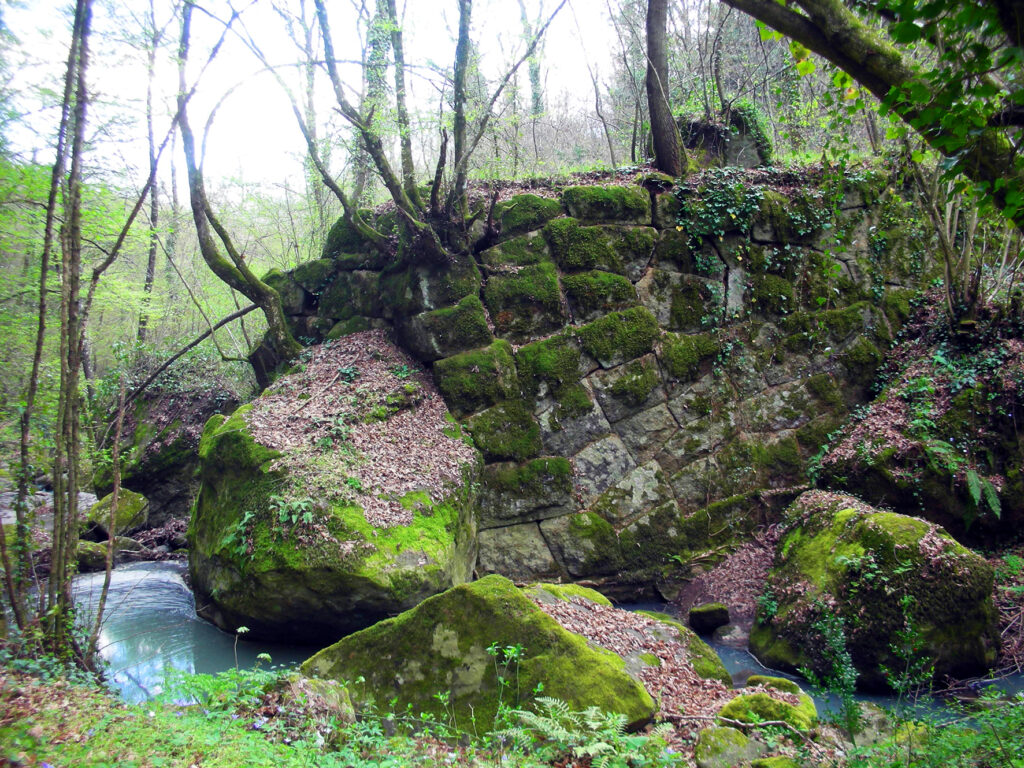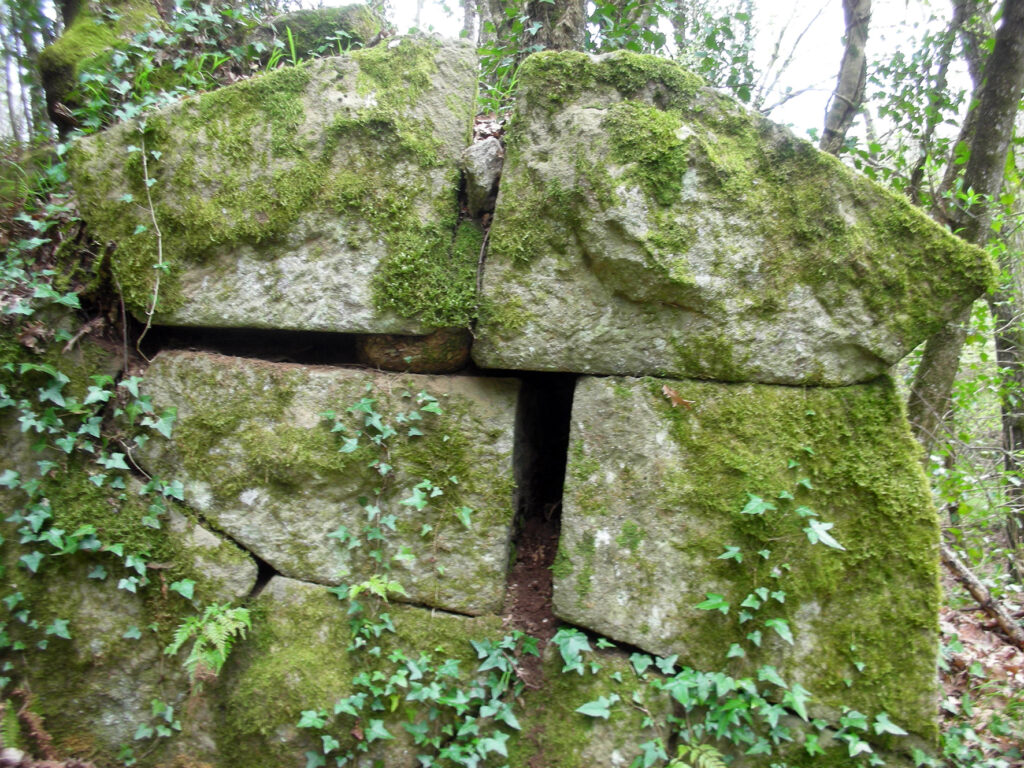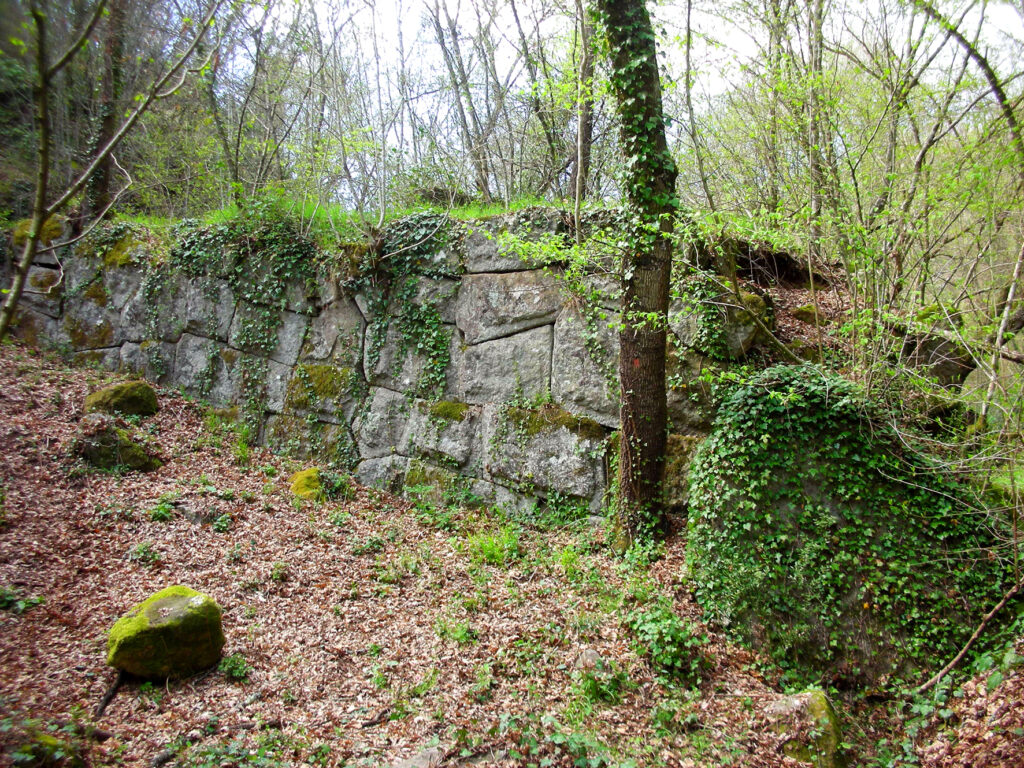Dighe a Blocchi poligonali
Polygonal block dams



Ancora in funzione nel Medioevo, queste opere idrauliche sono fatte risalire ad un periodo più antico ma non anteriore alla media-tarda età repubblicana (III-I secolo a.C.).
Lo sbarramento più massiccio, a monte, è stato realizzato a secco con blocchi poligonali di peperino estratti da una cava ancora molto evidente nelle vicinanze.
La fattura di questi massi è particolarmente evoluta, attribuibile al terzo tipo di opere poligonali, quelle dove l’incastro del materiale è più complesso e raffinato. Poco più a Valle è presente l’altro sbarramento, meno imponente poiché di solo contenimento.
L’altezza, le dimensioni dei massi e l’estremo spessore di queste opere fa pensare che trattenessero un invaso di considerevoli dimensioni.
Still in use during the Middle Ages, these hydraulic structures are dated to an earlier period, though not earlier than the mid-to-late Republican era (3rd–1st century BCE).
The most massive dam, located upstream, was built using dry-stone construction with polygonal blocks of peperino extracted from a quarry that is still very evident in the vicinity.
The craftsmanship of these blocks is particularly advanced, attributable to the third type of polygonal masonry, where the fitting of the material is more complex and refined. Slightly further downstream is the other dam, less imposing as it served only as a retaining structure.
The height, size of the blocks, and the extreme thickness of these structures suggest that they retained a reservoir of considerable size.


